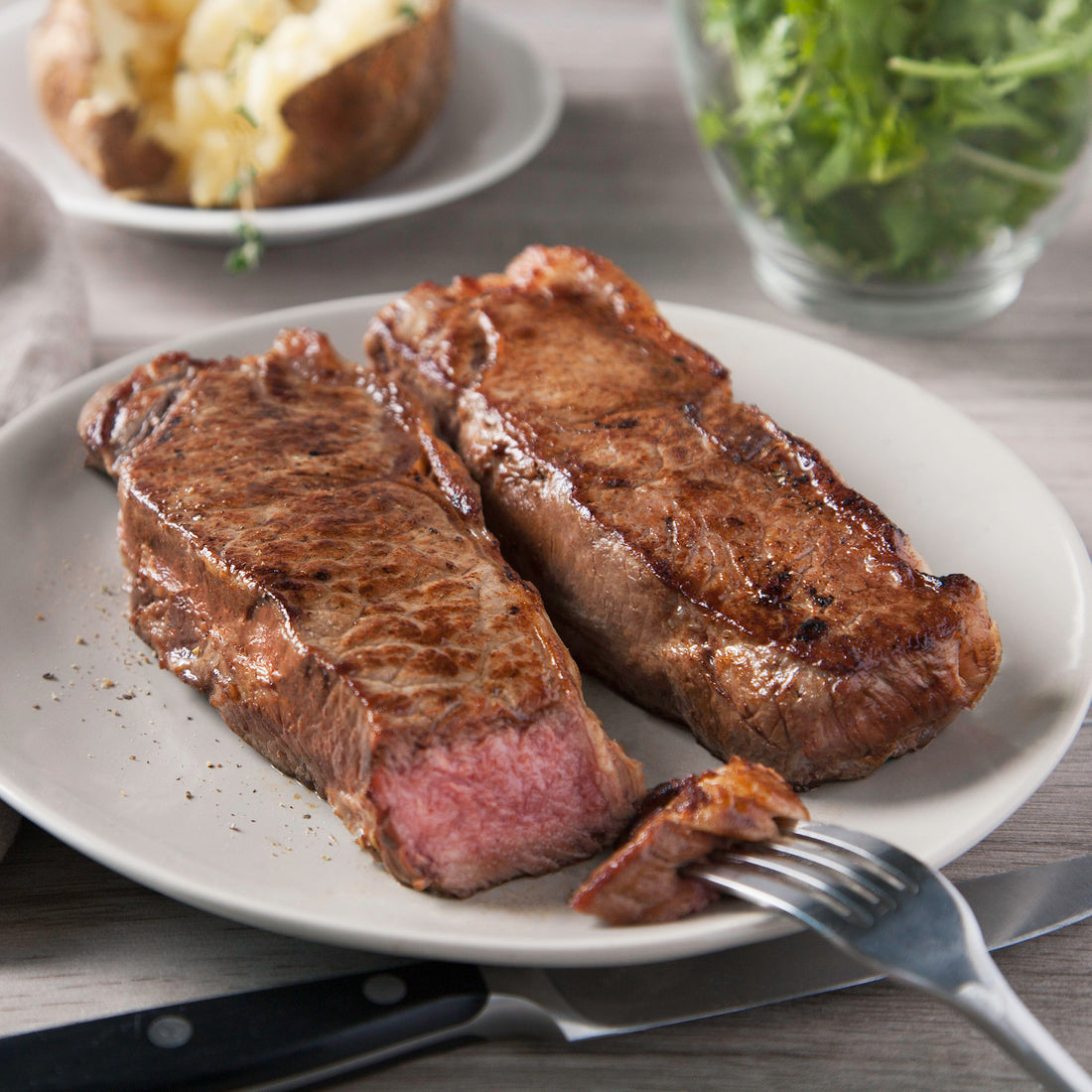
Don't Overcook Your Grass Fed and Finished Steak
Break out that food thermometer and geek out with us.
The proper internal meat temperature is key to a juicy and delicious steak, especially when cooking a grass-fed and finished steak. Don't overcook your steak!
There is less wiggle room with grass-fed and finished steak compared to conventional steak, don't overcook your steak! We have broken down the science behind why grass fed and finished steak cooks faster. After reading this, you'll armed you with all the information you need to cook the perfect steak.
Grass fed and finished steak has a lower overall fat content, with less marbling, compared to grain-fed, conventional beef.
The higher fat in conventional beef acts as an insulator, which helps to control the internal temperature and allow it to steadily rise. But with grass-fed and finished beef, the leaner protein will increase in temperature faster without the extra fat to slow it down. Less fat makes it easier to overcook your steak.
Beef naturally contains water. And once the water reaches its boiling point, it can shoot the temperature of the meat up quickly because water is a great conductor of heat.
This explains why you can check your steak temperature. Note it’s not quite there yet, give it a few more minutes, and wham! You accidentally overcooked your steak. The temperature rises so quickly that the steak went from perfectly cooked to overcooked steak. You can avoid this by pulling your steak off of the pan or grill at a lower internal temperature than your desired final temperature. Rest assured that your final steak will be the perfect doneness after it has had time to rest. We recommend 7 minutes. Check out our handy guide for all the perfect temperatures.
To make things way easier for you, our beef geeks tested steak after steak to determine the proper temperature range for pulling our steaks off the heat.
Each steak is slightly different because each cut has different levels of fat content. We recommend taking the internal temperature in 3 different locations (top, and both ends or sides) and using the coolest reading for determining when it is done. Then let your steak rest for at least 7 minutes to equilibrate and you’ve got yourself a delicious, perfectly cooked steak. Dig in.


